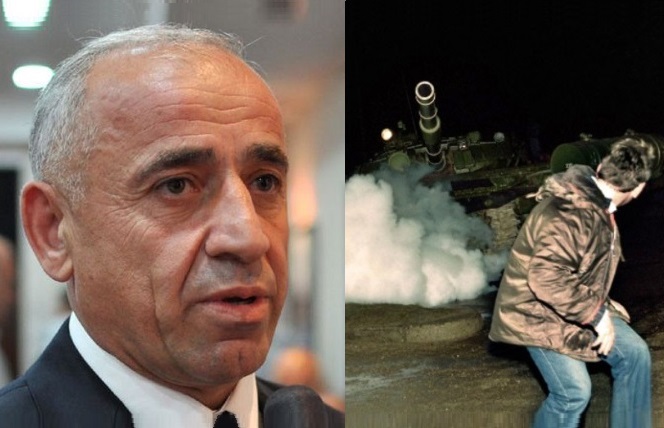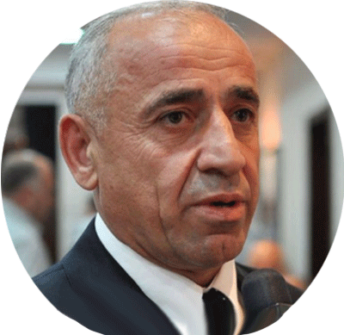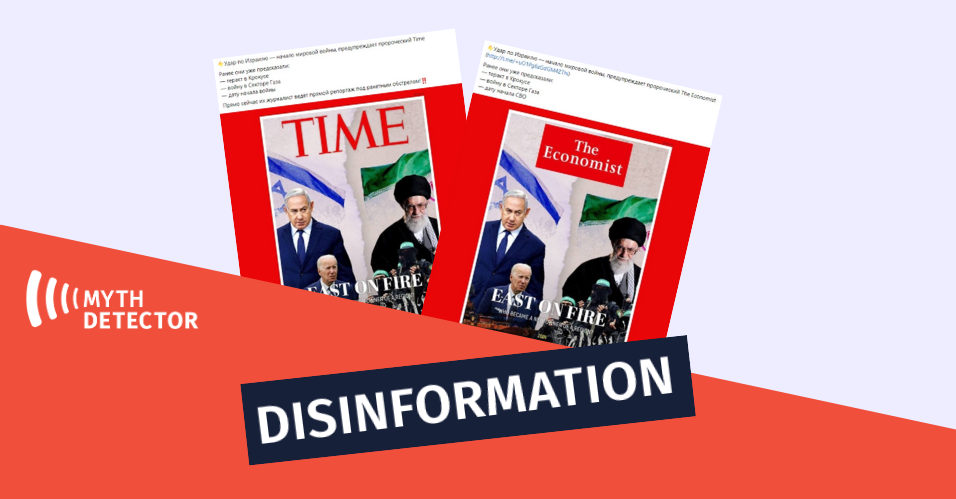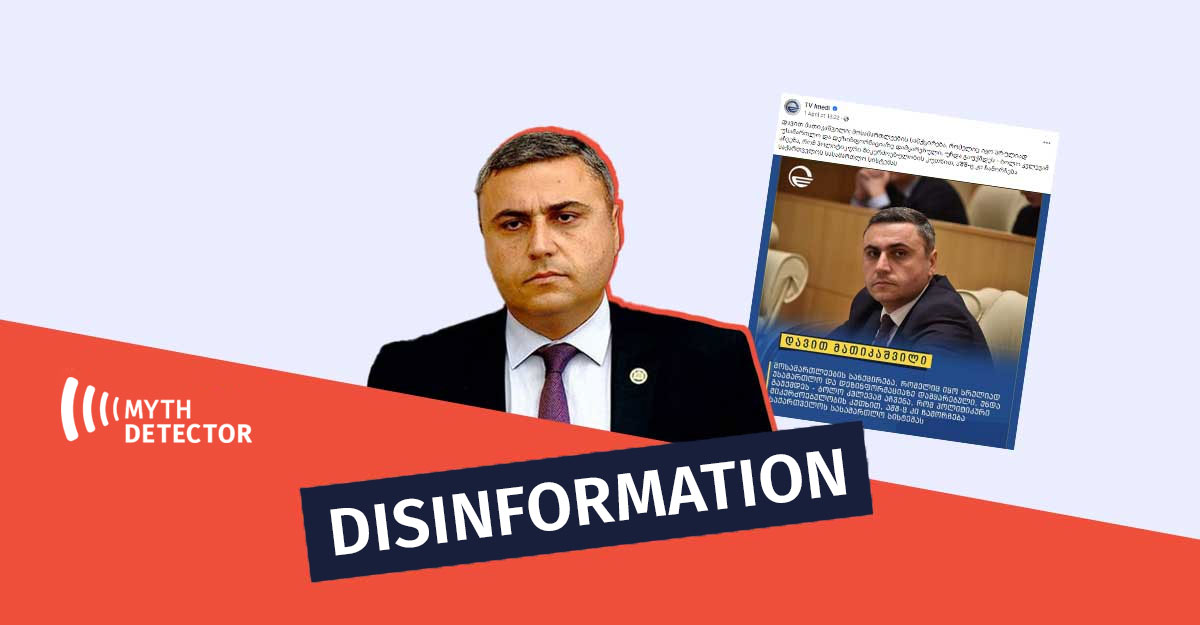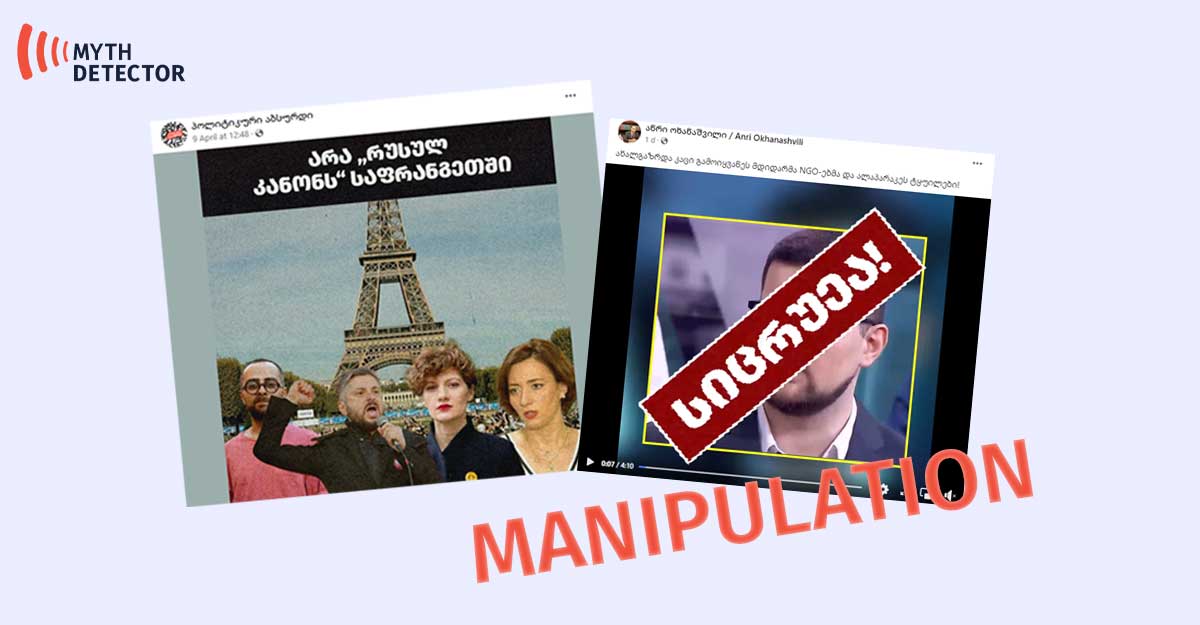Georgian tabloid Asaval-Dasavali released an interview with Tristan Tsitelashvili in its May 24-June 4 edition, where the latter states that on January 13, 1991, fire was opened against Lithuanians not by Soviet troops, but by Audrius Butkevičius, one of the leaders of Lithuanian reform movement “Sąjūdis”.
Tristan Tsitelashvili, military expert: It was just former Lithuanian Defense Minister Audrius Butkevičius, who was brought to the Maidan [in Ukraine] to support them; this person showed his true worth in the past by opening fire at his own people near the TV Center [in Vilnius] on January 13, 1991 in order to spark unrests. And it really happened so – the Soviet army was blamed for the bloodshed and just this development played a crucial role in Lithuania’s decision to quit the Soviet Union. The contribution made by Butkevičius was highly appreciated and this bloodsucking criminal was appointed as the Defense Minister of Lithuania.
This report is disinformation, because there are video footages and investigation proving how the Soviet army settled its scores with peaceful protesters in Lithuania on January 13, 1991 leaving 14 persons dead and about 1 000 injured.
January 13, 1991 Developments
On March 11, 1990, Lithuania declared the restoration of its independence and quit the Soviet Union. A year later, on January 10, 1991, Soviet leader, Mikhail Gorbachev issued an ultimatum to Lithuania on restoration of the Soviet constitution and abolition of anti-constitutional legislation that was rejected by the Lithuanian Parliament led by Vytautas Landsbergis. By January 8-9, several units of Soviet special troops, including a famous anti-terrorist Alpha Group and the paratroopers of the Pskov Air Assault Division, had been thrown to Lithuania. Restoration of the constitutional order was cited as the official reason behind sending military contingent to the country. On January 11, 1991, the Soviet troops seized the Press House building in Vilnius that prompted thousands of unarmed Lithuanians to gather outside the Parliament building and the TV Center in Vilnius and defend their independence. On January 13, at dawn, Soviet troops attacked the TV Center leaving 14 persons dead and about 1 000 injured.
Disinformation was first disseminated by Russian journalist Alexander Nevzorov
Alexander Nevzorov, the host of the program 600 Seconds aired on the Leningrad TV channel, was the first person to disseminate the disinformation that Soviet troops were not to be blamed for killing the Lithuanians. He covered the January developments in Lithuania. On January 15, Channel One of the central television aired a 15-minute propagandistic film “Nashi” (Ours), where the author portrays Soviet troops as the heroes devoted to their homeland.
According to the film, Soviet troops did not intend to use power. It also emphasizes that the Lithuanian government deceives people when it blames Soviet troops for killing protesters. The journalist claims that those people died from heart attacks as well as in traffic accidents.
“Politicians, big and small, dirty and rowdy, are all nervous, trying to become popular at the expense of Lithuanian nightmare. But none of them, rowdy and crazy, want to understand or are able to understand that we have no right to sacrifice hundreds of thousands of our Ukrainians, Russians, Polish. Nobody has thought and will think about them. It is easier to cover up something with the army, to cheat, cheat and cheat, not to think, to oppress, to print victims’ photos, who, as it appeared as a result of verification, died from heart attacks or in traffic accidents.”
The New York Times also reported on Nevzorov’s film slamming the author for biased coverage of the Lithuanian developments. The American daily newspaper wrote on January 17, 1991 that no Lithuanians were interviewed in the program. It also emphasized that “one sequence depicted the reporter [Nevzorov], a Kalashnikov automatic rifle slung over the shoulder of his leather jacket.”
Shortly after the Vilnius developments, in November 1991 Nevzorov established the People’s Liberation Movement “Nashi,” which he defined as a united front of resistance to the anti-national politics of then administration of Russia and other former Soviet Republics. The movement was openly in favor of the Soviet Union’s restoration.
The activities carried out by Algirdas Paleckis, main disseminator of disinformation, were financed by the Kremlin.
The same version of events was actively promoted by Lithuanian politician Algirdas Paleckis. He said that in January 1991 fire was opened not by OMON units, but by Lithuanian independent movement Sąjūdis led by Audrius Butkevičius. The Lithuanian Supreme Court imposed a EUR 3000 fine on Paleckis for slander and dissemination of disinformation. Based on his conspiracy theory, an hour-long pseudo-documentary film was prepared by the program Man and Law on Russia’s Channel One.
According to stopfake.org, Algirdas Paleckis is one of the founders of non-governmental organization Lithuania Without Nazism, part of the France-registered World Without Nazism. This global group has been founded by the Russian ex-politician and billionaire Boris Shpigel, who has close ties with the Kremlin. Among the official aims of the organization is fighting against the rise of Nazism and fascist ideas. However, in reality, the group often is used as a tool for the Russian foreign policy. Stopfake.org reports that the organization’s public statements tend to match the views of the Russian Foreign Ministry.
According to the Center for European Policy Analysis (CEPA), manipulation of the January 13, 1991 developments is one of the messages employed by Russian propaganda.
According to the Center for European Policy Analysis (CEPA), from 2016 Russian propaganda intensified its efforts in connection with the upcoming 25th anniversary of the 1991 developments. The main goal was to mislead the population through distorting the history. To achieve this goal, Russia used a number of technical methods, among them name-calling; card stacking; manipulation of the context of the event, etc.
P.S. Two years before the Lithuanian developments, on April 9, 1989 Soviet troops attacked peaceful protesters on the Rustaveli Avenue in Tbilisi, killing 21 persons.
About Tristan Tsitelashvili
Tristan Tsitelashvili had been arrested on spy charges. He was accused of spying in favor of Russia during the 2008 Russia-Georgia war and passing secret information to the enemy.
In 2013, the ruling Georgian Dream party recognized Tsitelashvili as a political prisoner and released him from jail.
In 2016, former Chief of Joint Staff of the Georgian Armed Forces, Gigi Kalandadze said that following the August war, Tsitelashvili recorded videos of Georgia’s secret military facilities and handed them over to the Russian side.
On June 2, 2017, Patriot news agency disseminated a video recording of the meeting held at Ivane Javakhishvili Tbilisi State University. During the meeting, which was dedicated to “Western Threats,” Tsitelashvili accused U.S. Ambassador to Georgia, Ian Kelly of interfering in Georgia’s internal affairs. He also noted that “Georgia is a hostage of the United States” and that “Ian Kelly met in Pankisi with those terrorists, who returned from Syria.” Tsitelashvili also added that he had information that Russian President Vladimir Putin was ready to talk with Georgia about Abkhazia and South Ossetia.

















